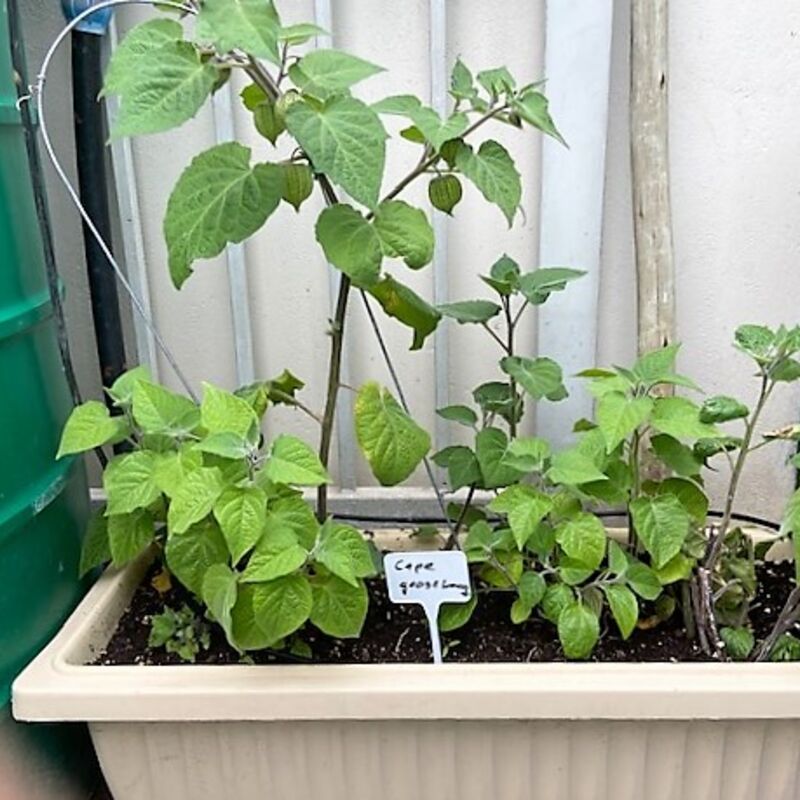Cape Gooseberries

Cape gooseberry (Physalis peruviana)
The Cape gooseberry is a South American plant native to Peru, Ucudorr and Columbia in the nightshade family Solanaceae.
History
The history of the plant in South America can be traced to the Inca Empire and has been cultivated in England since the late 18th century and in South Africa in the Cape of Good Hope since at least the start of the 19th century.
Widely introduced in the 20th century and is cultivated or grows wild across the world in temperate and tropical regions.
Appearance
The Cape Gooseberry is closely related to the tomatillo and the Chinese lantern. As a member of the plant family Solanaceae, it is related to many edible plants, including tomatoes, eggplants and potatoes.
The plant is perennial in the tropics and develops into a diffusely branched shrub reaching 1–1.6 m (3 ft 3 in–5 ft 3 in) in height, with spreading branches and velvety, heart-shaped leaves.
The hermaphrodite flowers are bell-shaped and drooping, 15–20 mm (5⁄8–3⁄4 in) across, yellow with purple-brown spots internally. After the flower falls, the calyx expands, ultimately forming a beige husk, fully enclosing the fruit.
The fruit is a round, smooth berry, resembling a miniature yellow tomato 1.25–2 cm (1⁄2–3⁄4 in) wide, bright yellow to orange in colour, and sweet when ripe, with a characteristic, mildly tart grape- or tomato-like flavour.]
A prominent feature is the inflated, papery calyx enclosing each berry. The calyx is accrescent until the fruit is fully grown; at first, it is of normal size, but after the petals fall, it continues to grow until it forms a protective cover around the growing fruit.
If the fruit is left inside the intact calyx husks, its shelf life at room temperature is about 30–45 days. The calyx is inedible.
Growing Cape Gooseberry
It has been widely introduced into cultivation in tropical, subtropical, and temperate areas like Australia, China, India, Malaysia, and the Philippines It grows well in Mediterranean climates but can be damaged by frost.
It grows well in rainfall amounts from 800–4,300 mm (31–169 in) if the soil is well-drained, and prefers full sun or partial shade in well-drained soil, and thrives in sandy loam
The plant is readily grown from abundant seeds (100 to 300 in each fruit) but has low germination rates.
Year-old stem cuttings treated with hormones to promote rooting are successful for planting but have a lower success rate than growing from seed.[2]
Pests and diseases
Birds eat the fruits. Mites, whiteflies and flea beetles are problematic.
Powdery mildew, soft brown scale root rot and viruses and viruses may affect plants
Culinary uses
Cape gooseberry is made into fruit-based sauces, pies, puddings and chutneys, jams, and ice cream or eaten fresh in salads and fruit salads.
Nutrition
According to nutrient analyses by the USDA, a 100 g serving of Cape gooseberries is low in food energy (222 kilojoules or 53 kilocalories) and contains moderate levels of vitamin C, thiamine, and niacin.